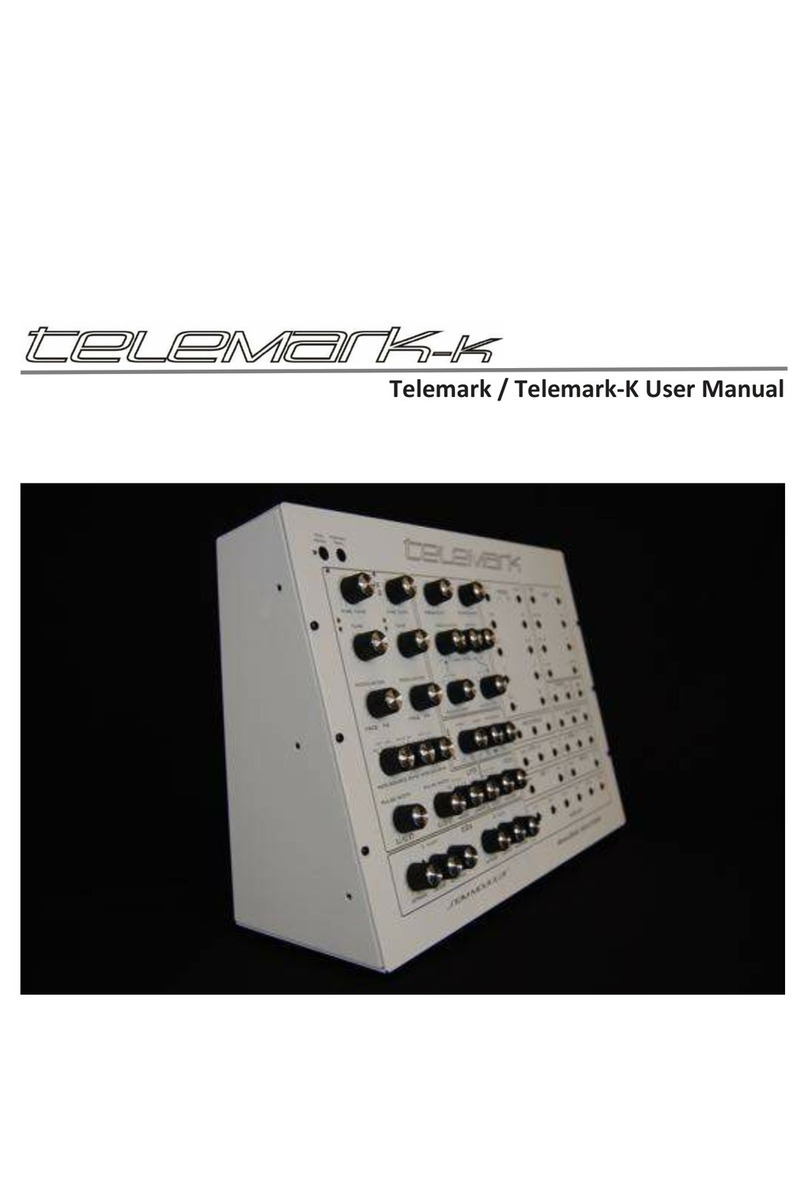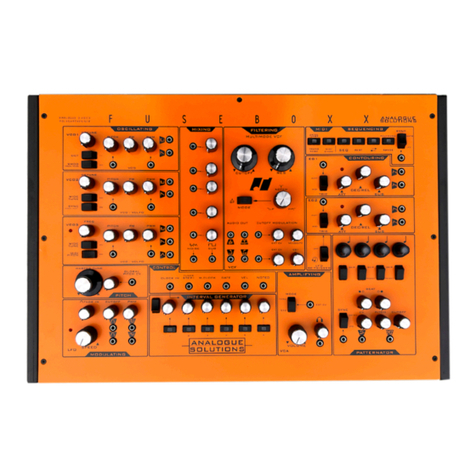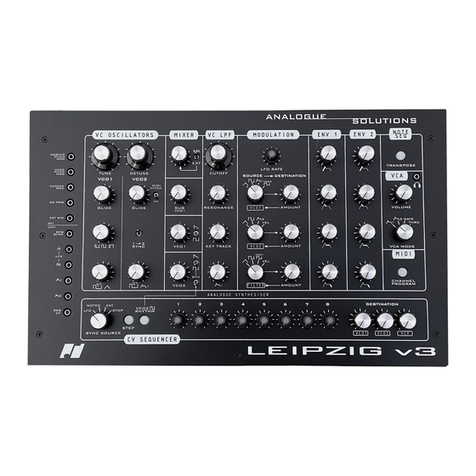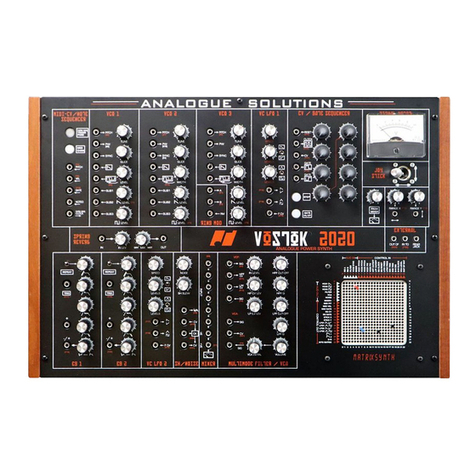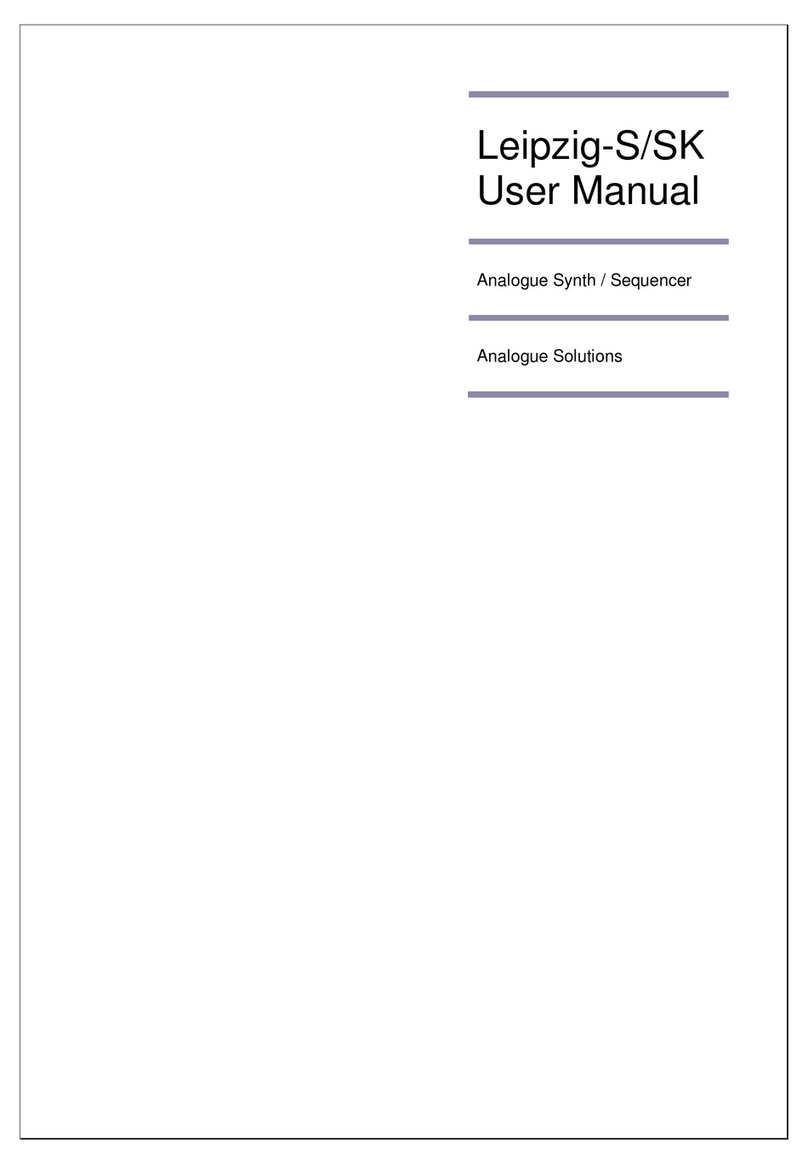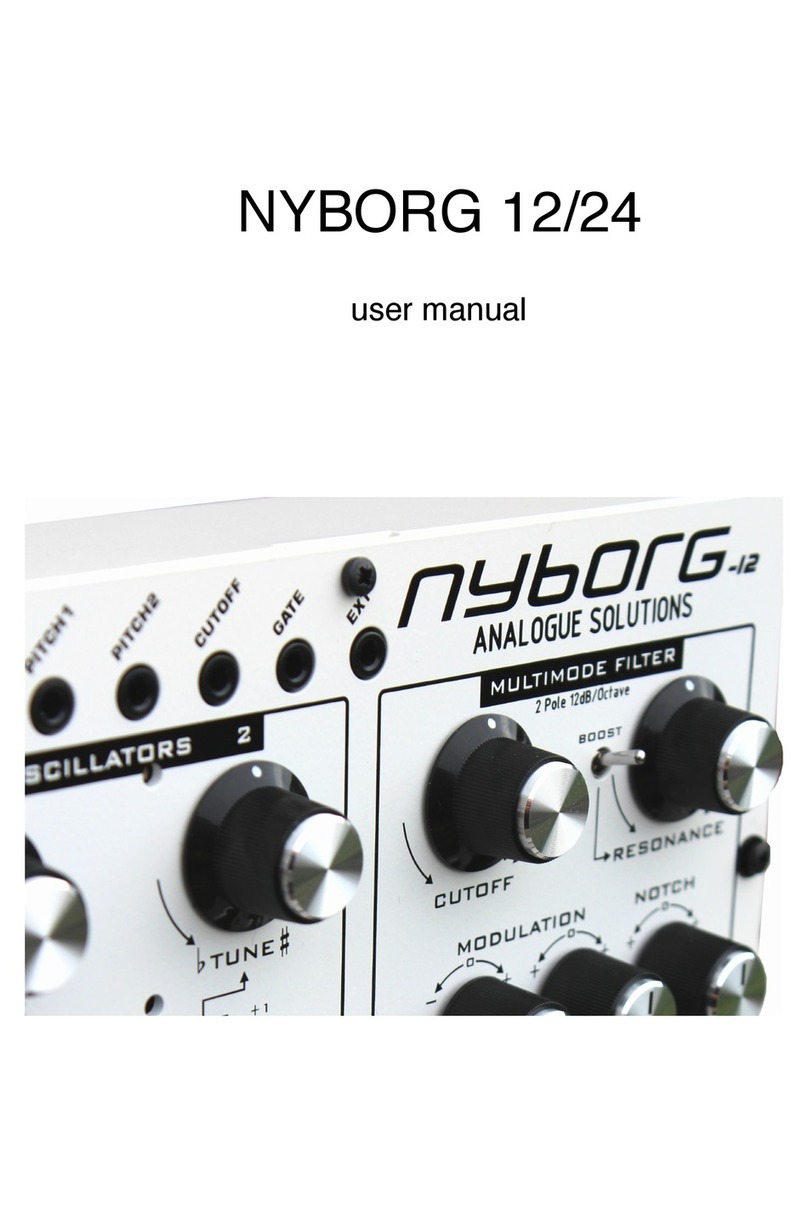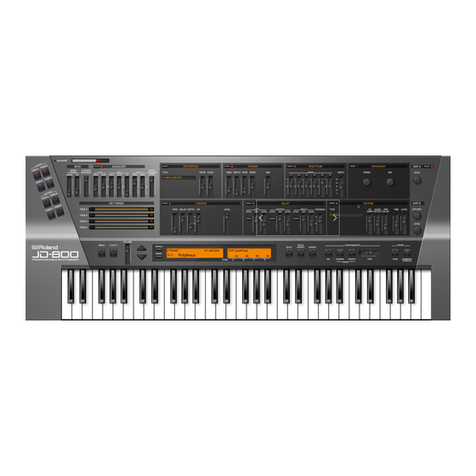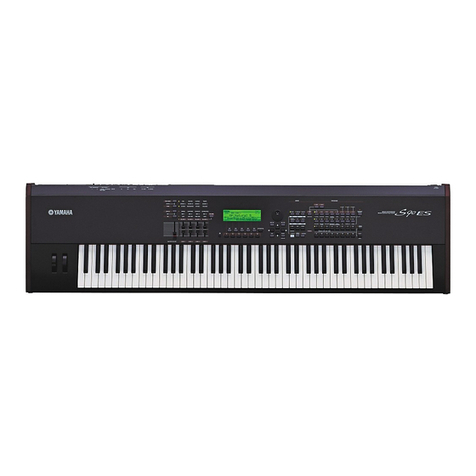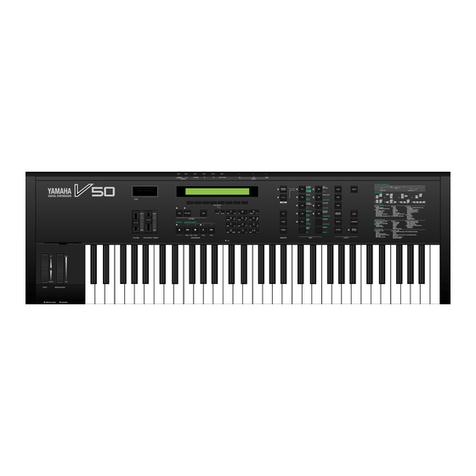analogue solutions Semblance/4Voice V2e&oe(c)21-10-2004
8
SAFETY INSTRUCTIONS
Please read carefully before using:
• Semblance: only use the correct power adaptor - 230V (or 115V whatever your
country needs).
• 4Voice: ensure the correct voltage is selected on the bottom of the synth. 115V or
230V depending on your supply. Disconnect the power cable before changing.
• Never handle the adaptor/mains cable with wet hands
• Never excessivly bend the adaptor/mains cable or get it trapped or place heavy
objects on it. If the cable becomes damaged, replace it.
• Ensure the unit is disconnected from the mains before moving or cleaning.
• Always disconnect the unit from the mains if there is lightning in your area.
• Ensure Semblance is on a stable surface, and never place heavy objects on top of
it. The 4Voice must be rack-mounted.
• Never allow young children or animals to operate the unit or adaptor.
• Do not use excessive force when using the controls or inserting cables to the con-
nectors.
• Theunitshould notbeoperated intherain ornearwater andshouldnot beexposed
to moisture. If the unit is brought from a cold environment to a warm one, the unit should
be left to reach the ambient temperature.
• Keep the unit away from heat sources, such as radiators, ovens, heaters etc.
• Never allow the unit to get wet. Do not operate it near water, like pools, sinks, bath-
rooms etc. Do not place beverages on or near it.
• Never open the case or attempt to make repairs. Refer any servicing to a qualified
service personnel.
Preventing damage to other connected devices;
Semblance/4Voicehasaveryhighdynamicrange.Itiscapableof produceloud signals
of very high and sub-sonic frequencies that could blow inadequate speakers if played too
loud. It is recommended that input levels to external equipement (mixers, amp's etc.) is
kept low when first connected, and then sowly increased to a userable level.
Maintenance Instructions
Any cleaning of the Semblance/4Voice case should be done with a clean lint-free
cloth. DO NOT USE SOLVENTS OR CLEANERS, as this will deteriorate the exterior ap-
pearance of the equipment.
Mounting
Semblancemounting does notmean 'place onthe wall' or'to make love to' in this instance.
Place Semblance soundly on any stable surface so he cannot fall off or over, causing it
or yourself injury.
The 4Voice version should be mounted in a suitable instrument rack case (19" type). En-
sure you use all rack-mount holes.
POWER
Possible sources of US voltage mains adaptors for the Semblance (not tested);
www.radioshack.com p/n 273-1631 or 273-1690
